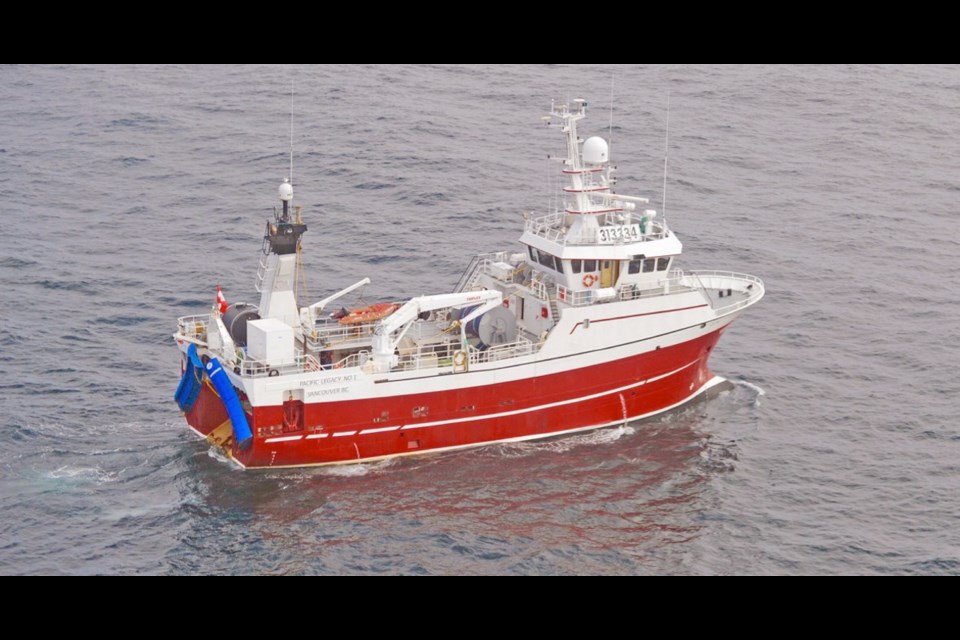An international scientific expedition aimed at unlocking the hows and whys of Pacific salmon survival in the Gulf of Alaska amid fears for their future is sailing out of Victoria in March.
“While we recognize that ocean and climate conditions are major factors regulating salmon abundances, the mechanisms regulating abundances in the ocean are not known,” B.C. scientists Richard Beamish and Brian Riddell said in a January report outlining this year’s cruise plan.
Ocean ecosystems are changing — the Blob has reappeared, bringing warm water to the Gulf of Alaska.
Don’t mistake this expedition for a luxury cruise. Winter storms and high seas are expected in the north Pacific Ocean.
Scientists are seeking to provide more accurate forecasts of salmon returns during what Beamish and Riddell say might be the most difficult time in recent history for stewardship of Pacific salmon. They want to understand what affects salmon out in the ocean, where they spend three-quarters of their lives.
The survey takes place as B.C. fishermen fear disastrous returns this year following poor returns for much of the coast last year.
The Pacific Salmon Commission said the 2019 Fraser River sockeye return of 485,000 was the lowest in recorded history. Numbers were far below the 2009 collapse which sparked the Cohen Commission.
The chartered 37-metre commercial trawler Pacific Legacy No. 1 will carry 12 scientists from Canada, Russia and the U.S. It leaves Victoria on March 11, returning April 4.
This is the second such survey. The first international expedition took place early in 2019 and a third is set for 2021.
Following the first survey, “What we did see was very consistent with what came back in 2019 for the adult returns,” Riddell said.
For example, when it came to chum salmon, “by country of origin and by age, our samples were exactly consistent to the lack of return in B.C.,” he said.
Scientists will be testing hypotheses as they collect a wide range of data, including ocean conditions, the depths at which salmon are found, and the types of tiny ocean creatures they consume. The latest survey will help confirm and build on interpretations from the first, including understanding how the winter ecosystem affects B.C. salmon numbers, the report said.
Scientists will be looking to identify rearing areas for different species of Pacific salmon and their numbers.
One objective is to study juvenile salmon in their first winter at sea.
“What we are learning is that [for] a fish to get out there and to survive that winter out there, it has to have an energy store that it would pick up in the early marine periods,” Beamish said.
Last year, they learned that young sockeye in their first year in the ocean will migrate out into the middle of the North Pacific, a distribution similar to steelhead.
DNA testing showed that a sockeye caught out in that area in February had made a mind-boggling journey.
That fish originated from Chilko Lake on the Chilcotin Plateau, Beamish said. It would have crossed the Chilcotin to Williams Lake where it joined the Fraser River.
The survey’s catch of Fraser River sockeye in their second (spawning) year were “very poor, possibly an indication of the resulting historic low return,” the expedition plan report said.
Beamish, emeritus scientist at the federal Pacific Biological Station in Nanaimo, and Riddell, science adviser for the Pacific Salmon Foundation in Vancouver, have raised more than $1 million in support for the upcoming survey from the provincial and federal governments, U.S. and B.C. seafood sectors, fish farmers, and non-profit groups, such the North Pacific Anadromous Fish Commission and the Salmon Foundation, which is managing the financial end.
Individuals donating to this year’s effort include Catie Bursch, of Homer, Alaska.
Every season, Bursch, her husband and two adult daughters travel 560 kilometres to fishing grounds in Bristol Bay on the eastern edge of the Bering Sea to go after red salmon — what we know as sockeye.
A desire to protect Pacific salmon and to give her daughters a future prompted Bursch to donate a percentage of her income after she flew to a Seattle conference and heard Beamish speak to industry. She’s keeping the total confidential.
“They’ve lost salmon everywhere and so if we do everything the same we are just going to lose them,” she said.
“But now we have climate change, too. For sustainable salmon, we’ve got to know what the changing ocean is going to mean to them.”



